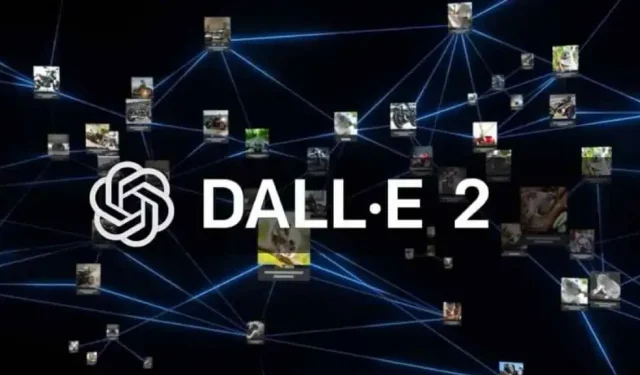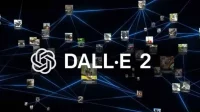DALL-E 2 is an artificial intelligence tool developed by OpenAI that can turn simple words into images. How it works? How to use it? We tell you everything.
In recent years, artificial intelligence has made tremendous progress. This allows him to prove himself in many areas, and this is already very promising. OpenAI is working on a wide variety of projects. The company recently broke the news about its DALL-E 2 algorithm, which can generate very complex images from simple descriptive texts. After reading this article, you will know everything there is to know about this subject.
What is DALL-E 2?
DALL-E 2 is a product of OpenAI, a startup backed in particular by US giant Microsoft. This is an artificial intelligence model, a feature of which is the ability to convert purely textual descriptions into images. Similar artificial intelligence models are taken from the Google Imagen software. The software developed them from collections of words and images on the Internet, as well as photos hosted on Flickr.
For an overview of how this works and sample images created by the DALL-E 2, watch the video below:
If we had to describe DALL-E 2 in a few words, we could say that it is “a new artificial intelligence system that can create realistic images and art from a natural language description.”Just insert words, any textual description of the image you “want”and DALL-E will convert the text into an image using its artificial intelligence models.
Who can use this OpenAI AI?
Currently, OpenAI, like Google, does not offer this technology to the general public. Only a limited community can take advantage of this truly impressive service through the invitation system. To be placed on the waitlist, an interested user must indicate whether they are a developer, professional artist, university researcher, journalist, or online creator.
The purposes of this waiting list are several. Firstly, we are talking about limiting the influx of requests and the resources used for expansion. When there are too many usage requests, a dialog box appears with the message “Too much traffic, please try again.”But it also avoids handing over this powerful technology to all hands. Some may use it for the wrong reasons.
In any case, according to OpenAI’s Joan Jang, “We are working hard to speed up access, but it will probably take a while to reach everyone; As of June 15, we have invited 10,217 people to try DALL-E.”
How to use the product?
DALL-E 2 offers simple interfaces. Ultimately, this is the purpose of the product. A text area, a button to start generating, and an area to display the generated image. The team also added watermarks to the lower right corner of the images to indicate the source for DALL-E 2 and Imagen. This is necessary in order to avoid possible damage. In addition, a number of filters have been introduced to avoid violent content, nudity, conspiracies and other personalities. “There is an ongoing process of improving the security of these systems,” says OpenAI researcher Prafulla Dhariwal.
Like artificial intelligence in general, this type of product is very innovative. Therefore, the quality of the proposed results is very variable. So don’t be surprised to see images that are very different from what you imagined.
How to register?
If you want to know more, go to the DALL-E 2 official website and in order to be able to test the tool, you will need to fill out the form on this page.


